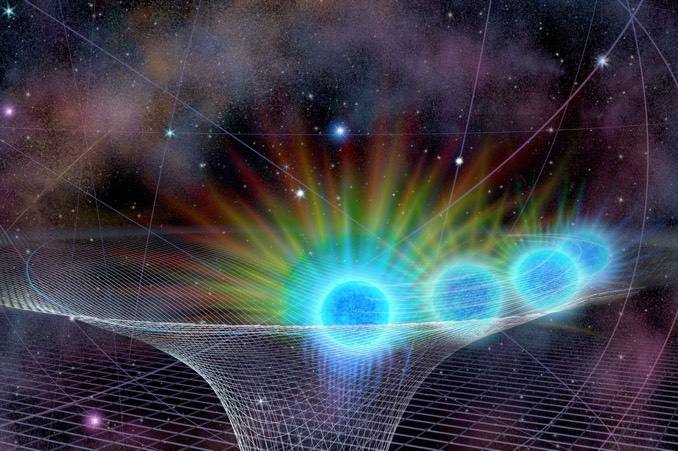
The supermassive black hole lurking at the center of the Milky Way is normally fairly calm as it shapes the orbits of nearby stars. But on 13 May, the area just outside the black hole’s event horizon, the point of no return for gas and dust falling into the hole’s gravity well, suddenly flared with unprecedented intensity. It was the third such outburst this year.
While black holes are, by definition, invisible, gas and dust sucked in by their enormous gravity are accelerated to extreme velocities, generating enormous heat that produces visible high-energy radiation before the material moves past the hole’s event horizon.
“We have never seen anything like this in the 24 years we have studied the supermassive black hole,” said Andrea Ghez, UCLA professor of physics and astronomy and a co-senior author of a paper describing the observations in Astrophysical Journal Letters. “It’s usually a pretty quiet, wimpy black hole on a diet. We don’t know what is driving this big feast.”
To put the flare ups in context, the researchers analysed more than 13,000 observations of the black hole, known as Sgr A* for short, that were captured since 2003 by the W.M. Keck Observatory in Hawaii and the European Southern Observatory’s Very Large Telescope in Chile.
The 13 May event was twice as bright as any previous observation. Combined with the two outbursts seen earlier in the year, astronomers suspect a feeding frenzy of sorts might be underway.
Said Tuan Do, the study’s lead author at the University of California at Los Angeles: “The first image I saw that night, the black hole was so bright I initially mistook it for the star S0-2, because I had never seen Sagittarius A* that bright. But it quickly became clear the source had to be the black hole, which was really exciting.”
As it turns out, S0-2 made a close pass by Sgr A* last summer and it’s possible the black hole’s enormous gravity pulled away a huge quantity of gas that is just now falling in. Another possibility is that an object known as G2, possibly a pair of binary stars, suffered a similar fate during a close flyby in 2014.
“The big question is whether the black hole is entering a new phase, for example if the spigot has been turned up and the rate of gas falling down the black hole ‘drain’ has increased for an extended period, or whether we have just seen the fireworks from a few unusual blobs of gas falling in,” said Mark Morris, UCLA professor of physics and astronomy and the paper’s co-senior author.
More observations are needed to pin down the nature of Sgr A*’s feast.
“We want to know how black holes grow and affect the evolution of galaxies and the universe,” said Ghez. “We want to know why the supermassive hole gets brighter and how it gets brighter.”



